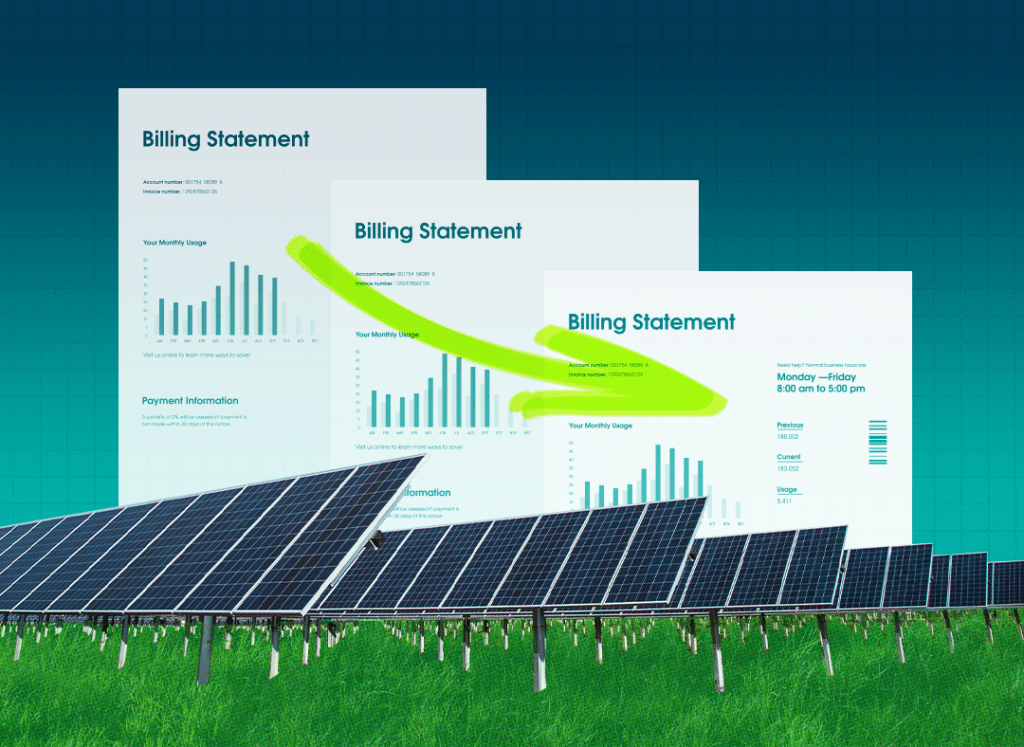
NEM 3.0 in California: Opportunities for Commercial Ventures
In April 2023, the third revision to the California Public Utilities Commission’s net energy metering policy went into effect in SCE, PG&E and SDG&E service territories. And with that revision came sweeping changes to how California businesses, schools, universities and municipalities are compensated when investing in solar and storage.
Here’s a brief look at what those changes mean and how your business can leverage battery energy storage systems to generate more savings on your next solar project.
Understanding NEM 3.0
What is NEM 3.0?
Net energy metering (NEM) policies provide savings for utility customers who generate their own solar energy, allowing them to sell their system’s excess solar electricity back to the grid.
Under California’s previous NEM 2.0 policy, utility customers were compensated at the retail rate for their excess solar production or solar exports. This helped to offset future electricity bills and created a strong case for organizations to invest in onsite solar.
Under the current NEM 3.0 policy, California shifted from a net metering to a net billing structure.
Instead of receiving compensation for surplus solar production at the retail rate, organizations now receive compensation for the excess production at a rate that varies depending on the time and day the solar was exported back to the grid– a move that significantly reduces the value of solar exports by up to 75% of the retail rate.
Impacts of NEM 3.0 on Californian Commercial Ventures
Energy Storage Solutions
California utility customers can generate significant savings by pairing onsite solar with a battery energy storage system.
Instead of selling excess solar back to the utility – at the new much lower variable rate – organizations can now store their surplus solar in a battery energy storage system.
By storing low-cost energy in the in the batteries and unloading that stored energy during peak periods of higher electricity rates, your organization can considerably reduce its energy bills, take advantage of time-of-use rates and enhance its energy independence and reliability.
And with all of California’s investor-owned utilities significantly raising electricity rates within the past year, evaluating solar + storage now under NEM 3.0 can result in generating greater annual savings than if you installed solar alone, allowing you to save even more money over the life of your system.
Make the Most NEM 3.0 Updates in California
Under NEM 3.0, your organization can pair solar and storage solutions with a Power Purchase Agreement (PPA). By doing so, your organization can leverage the following benefits:
- Increased energy savings
Commercial solar energy storage is your organization’s best defense against costly and fluctuating peak energy charges. By storing low-cost energy and delivering it during peak periods of higher electricity rates, your organization saves on overall energy costs and avoids peak usage penalties. - Reduced carbon footprint
A solar + storage system has no direct emissions. It’s energy efficient. It recycles electricity. Pairing solar + storage is a win-win for your sustainability goals, helping you lower your carbon footprint considerably more than just by installing solar alone. - Predictable payments
When financed as a power purchase agreement (PPA), your business can purchase power generated at a fixed rate, shifting your solar + storage project from a costly capital expenditure to a predictable operating expense for the life of your agreement. - Opportunities for grid services participation
By investing in a solar + storage system, your business may be eligible to generate additional revenue through participation in programs such as Demand Side Grid Support (DSGS), Demand Response Auction Mechanism (DRAM) and Emergency Load Reduction Program (ELRP Group B).
Leveraging NEM 3.0 for Increased Business in California
As in most areas of operations, strategic planning is one of the most critical factors to consider regarding net metering in California. Evaluating your current energy needs and creating a plan for strategic growth will ensure that you implement the right technologies for maximum benefit.
Here are the recommended steps for commercial organizations to take when planning for solar investments:
- Step 1: Evaluate current and future energy needs
Conduct an energy audit to determine peak demand times and total consumption. Consider TOU and utility rates when planning future growth and expansions. - Step 2: Choose the right partners
From installers to financial advisers, you need people who understand the ins and outs of NEM 3.0, solar systems and financing options. When you invest in a solar + storage project, you want to make sure the company you choose to work with will be around for the life of your system. - Step 3: Consider financing with a PPA
Power Purchase Agreements (PPA) reduce financial barriers by making solar systems more affordable. Unlike other commercial solar financing options – such as solar leasing, loans and cash – a commercial solar PPA allows you to save on the amount you pay for energy. By only paying for the energy you take from the system, you’re provided with predictable payments, worry-free maintenance and operations services, and longer-term savings over the life of your contract. - Step 4: Implementation
Once your system is in place, you’ll start to see the benefits of your solar investment. After installation, it’s critical to monitor and track energy production and consumption for the best results.
Make the Most NEM 3.0 Updates in California
NEM 3.0 brings significant changes to the solar industry in California but there are still ample opportunities for your business or organization to realize substantial energy savings. Find out how you can leverage commercial solar + storage solutions as an investment opportunity under NEM 3.0.
Let’s chat! To find out if solar + storage is the best fit for your organization, fill out the contact form below to schedule a quick 30-minute consultation with one of our solar experts. To find out if solar + storage is the best fit for your organization.